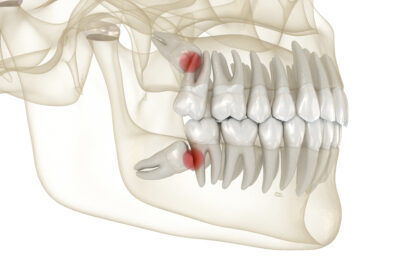If you lost a permanent tooth in an adolescent accident or if you’ve been wearing dentures for years, you might be concerned that replacing that missing tooth with a dental implant might be beyond your reach. After all, a few quick searches on dental implant websites indicate that poor jawbone density (a common side effect of tooth loss) can negatively impact your candidacy for the implant procedure. However, many of these websites fail to mention that a dental surgery procedure called a bone graft can help replace and regenerate lost jawbone tissue and help you qualify for this life-changing procedure.
Why Do Dental Implants Require Strong Bone Tissue?
Instead of resting on top of the gums, a dental implant is inserted into the jaw and becomes an integrated part of the surrounding bone. This bond makes dental implant restorations the most stable way to secure a dental prosthetic such as a crown or denture plate. Weak bone tissue creates a weak bond with the implant post, resulting in a higher chance of implant failure.
Three Common Causes of Weakened Jawbone
Several conditions can lead to compromised jawbone density, including:
- Prior tooth loss. A healthy tooth exerts pressure within the jawbone which, in turn, stimulates the body to deliver nutrients to the area, promoting the renewal of bone cells. When a tooth is lost, the surrounding bone quickly begins to atrophy and resorb int the body.
- Advanced gum disease. If gum disease is allowed to progress, the body begins to destroy the bone and connective tissue in the infected area. As bone tissue surrounding a tooth is lost, the tooth becomes loose and will eventually fall out or need to be extracted.
- Osteoporosis. This condition, whose primary characteristic is the loss of bone density, affects over 40 million people in the U.S.
What Happens During a Bone Graft?
During this procedure, your dentist will completely numb the site of the graft and, if you feel nervous about the procedure, you may opt for sedation dentistry like nitrous oxide or oral sedation. Depending on your needs, he may use bone tissue from your chin or another place in your body or he may opt to use a prepared bone grafting material from a donor source. The surgeon will expose the area in need of grafting and place the bone tissue. Often, a dentist will use your natural bone marrow or a manufactured substance to encourage the growth of new bone tissue cells and the acceptance of the bone tissue graft. After the bone graft has healed, a process that could take 3-6 months, your dentist can perform the dental implant surgery.
About Shawn Hofkes, DDS
With advanced training in oral and maxillofacial surgery, Shawn Hofkes, DDS is qualified to provide comfortable, safe dental surgery from our state-of-the-art dentist office in Cerritos, CA. To schedule your appointment or consultation with Dr. Hofkes, contact us today. We proudly serve patients of all ages from Cerritos, Lakewood, Long Beach, Buena Park, and all surrounding communities.














